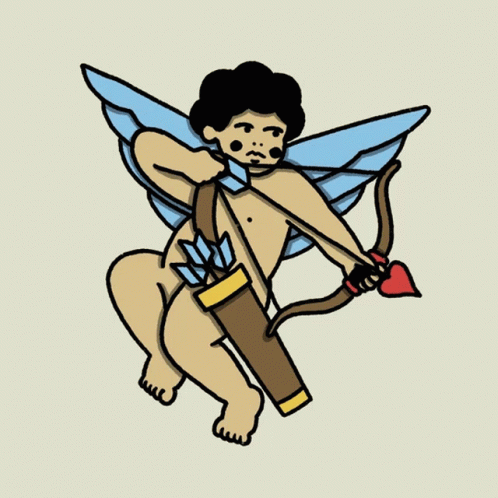How to quit Porn Addiction
Until you realize watching porn has been shaping the way you think, feel, and relate, you will never see the urge to quit. In this loveletter, I’m going to make you problem aware & walk you through my personal framework for breaking free from the cycle.

Porn addiction is one of those things that lurks quietly in the background.
As men specifically, we think it’s normal to consume it.
From an evolutionary standpoint, releasing sperm signals to the body that its primary biological mission—procreation—has been accomplished.
In that moment;
- your energy levels drop,
- your drive vanishes,
- and a false sense of contentment sets in.
Even if you aren’t truly happy, the body convinces itself that it’s done its job, and as a result, you slip into laziness, coasting along in a state of complacency.
Until you realize watching porn has been shaping the way you think, feel, and relate, you will never see the urge to quit.
It's easy to dismiss it as harmless—after all, we live in a world where accessibility to anything is a few clicks away.
But here's the thing: the ease of access doesn’t mean the absence of consequence.
Watching porn becomes a mental loop, rewiring how we experience intimacy, relationships, and even ourselves.
I’ve come to see that quitting isn’t only about stopping the act; it’s about reclaiming what’s been quietly hijacked—our imagination, our intimacy, and our eros.
In this loveletter, I’m going to walk you through my personal framework for breaking free from the cycle: How I stopped watching porn at the age of 24.
Of course, still today, I can not say I completely stopped.
Sometimes the urge arises, and I watch porn.
Approximately once every 4 months.
Sounds healthy? Yes, because it is.
As said, it’s more than saying "no"—it’s about transforming the very foundation of how you connect with yourself and others.
It’s not going cold turkey in the long run. It’s about being aware of the negative effects it has on your life and making sure you’re in control.
It’s time to reprogram what’s been running on autopilot for too long.
Ready to break the habit?
The Dangers Of Watching Porn
Most kids today are exposed to porn by the age of 13.
73% of teens have already seen it. That first exposure is the start of imprints on their perception of sex, intimacy, and connection. The reality is, 53% of boys and 39% of girls actually believe that pornography is a realistic image of sex —let that sink in.
Their foundation for understanding one of the most intimate human experiences is built on something performative, which is a black hole of energy in quantity and quality.
Beyond that, studies show that porn consumption is the second strongest indicator of relationship problems, being just behind infidelity.
Porn becomes an invisible seperation wall in relationships, amplifying emotional disconnection, reduced intimacy, and trust issues. It normalizes behaviors that are far from reality and love; the nurturing, connected intimacy most of us crave.
Sex's truth is connection. Not less, not more.

By watching porn, we lay a layer of whatever porn “is”, inbetween our connection to the other.
Even if you think it’s just a habit, something you can quit anytime, the truth is more complicated. Porn consumption can easily become habitual, leading to a form of dependency that hijacks the brain’s reward system.
Through neuroplasticity, your brain starts to crave more extreme and novel content just to feel the same adrenaline rush. So porn physically reshapes your brain, literally.
And that’s not all. Studies show that at least 1 in 3 porn videos depict sexual violence or aggression. Mainstream porn distorts how people see sex; it also actively normalizes abusive dynamics. In doing so, it reinforces harmful stereotypes, fuels objectification.
If you think porn is harmless, think again. The numbers tell a different story. The question is, how long are you willing to ignore them?

Framework to Break Porn Addiction
Awareness and Acknowledgment
Step 1: Identify the Problem Acknowledge this issue. Recognize that pornography consumption has become a problem and understand that it is of negative impact on your life. Gain awareness of how that is showing itself.
Step 2: Understand Triggers Keep track of triggers—whether emotional, situational, or habitual—that lead to watching pornography. This can be things like stress, boredom, loneliness, or specific cues like staying up late or being online alone.
Shift in Identity and Values
Step 3: Redefine Yourself Move from thinking "I’m addicted" to "I am capable of change." Shift from an identity of someone who consumes porn to someone who is actively seeking personal growth.
See yourself as an lover of the female as a whole. Visualize a version of yourself loving with passion and heart, instead of persuing pleasure for the sake of pleasure.
Step 4: Reevaluate Values Identify what truly matters—relationships, personal health, productivity, and integrity—and align your behavior with these values. Ask yourself: Does porn align with the person I want to become?
Disruption of Routine
Step 5: Break the Habit Loop Replace the old routine (watching porn) with healthier alternatives. In my personal journey, I did not quit masturbation but stopped watching porn. That will make you try to visualise the sexual act within your minds eye. This is important, because instead of imprinting visuals into your subconscious through watching porn, you are now nurturing your own imagination and creativity. This will take some effort and time in the beginning, but you will benefit from more mental health.
Also, when you feel the urge, you can also choose an activity that satisfies the same need (dopamine boost, relaxation). Examples include:
- Physical exercise (e.g., a short walk, workout)
- Meditation or mindfulness exercises
- Creative outlets like drawing, writing, or playing music
- Engaging in hobbies (reading, sports, learning)
Behavioral and Cognitive Support
Step 6: Create Accountability Systems
Share your goal with a trusted friend or therapist and check in regularly. Join a community with the shared goal of quitting porn. Accountability partners can help you stay committed.
Step 8: Reframe Urges
When you feel an urge, understand it as a signal, not a command. Use cognitive techniques. Instead of saying, “I can’t watch porn,” say “I choose not to watch porn because I value my mental clarity and relationships.”
Mindfulness and Emotional Regulation
Step 9: Practice Awareness
Incorporate mindfulness practices like meditation to help manage stress and emotions. By becoming aware of your emotional states, you can observe urges without acting on them.
Step 10: Healing your Relationship with Masculinity
You don’t have to be the “hard” guy all the time. You don’t have to dominate. You don’t have to carry everything alone. Being in touch with your emotions, showing compassion, asking for help—these are not signs of weakness but of balance and wisdom.
Healing your relationship with masculinity means redefining what it means to be a man. Accepting that you don’t need to live up to the outdated ideals of being unfeeling, always in control, or never showing vulnerability. Instead, finally embrace a balanced approach—be strong when needed, but also soft when it’s time to rest, recharge, and reconnect.

We’ve been conditioned to believe that masculinity equals toughness—physical and emotional. We’re told to "man up," to never cry, to be the dominant one in relationships, and to always stay in control. But this rigid image is a trap. It denies us the full spectrum of human experience. It keeps us from truly healing.
More on the topic of masculinity & masturbation in the loveletter episode NoFap & Excessive Masturbation: Let’s find Balance in our Sexuality, Men!
Join The Accountability Group
I created a group for us to support eachother in stop watching porn. In there, we can share our knowledge and experience, encourage eachother to find our real eros.
Anser this email with “eros” to be added— it’s for free.
I will be there and ready to answer questions and guide.
See you next week!
kiss kiss,
Tarkan
